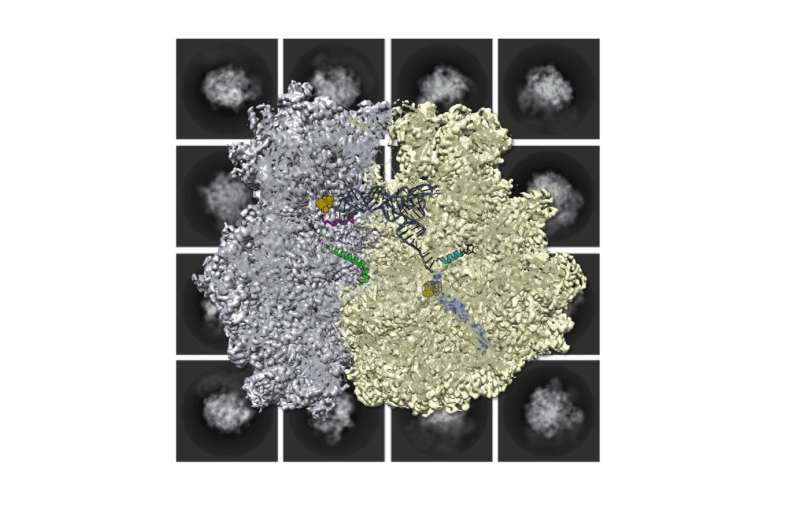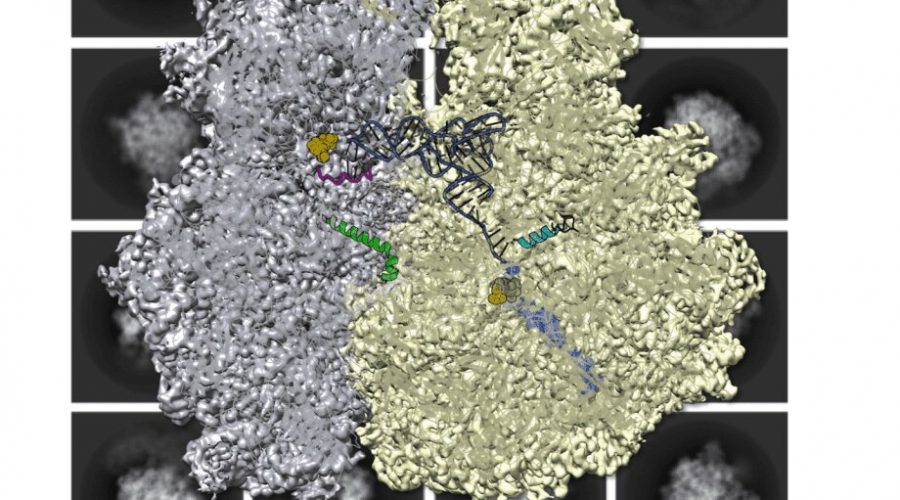Antibiotics for acne: Study shows why one works best

A new study brings precision to the understanding of which antibiotics work best for acne treatment and why. This is important for two key reasons. Acne affects nearly everyone at some point in life—it is, in fact, the eighth most common disease for all humans, affecting more than 85% of adolescents and young adults. And second, because antibiotics have long been an important go-to treatment for acne, dermatologists write more antibiotic prescriptions than any other specialty in medicine.
According to the American Academy of Dermatology (AAD), acne is the most common skin condition in the United States, where there are more than 3 million new cases a year. The effects of the disfiguring condition can extend well beyond the skin—patients often experience mental health symptoms, including depression and low self-esteem. Dermatologists commonly prescribe topical and oral antibiotics for acne treatment because they possess antimicrobial and anti-inflammatory properties. However, this can harm the microbiome, and overuse of these antibiotics can lead to antimicrobial resistance.
Because so many dermatologists rely on antibiotics for acne treatment, the AAD emphasizes the importance of antibiotic stewardship, which means using the right dose of the right antibiotic for the right length of time to reduce the risk of antibiotic resistance. Using broad-spectrum antibiotics for acne treatment for prolonged periods not only results in antibiotic resistance at concerning rates, but also can have a significant negative impact on the skin and gastrointestinal microbiome, leading to dysbiosis (an imbalance among microbial species) and increased risk for chronic health problems.
The problem with using broad-spectrum antibiotics for acne treatment
Broad-spectrum antibiotics do not distinguish between good and bad bacteria, so they try to inhibit them all. In contrast, narrow-spectrum antibiotics target specific pathogens, giving beneficial bacteria a chance to survive. “When doctors prescribe broad-spectrum antibiotics, that doesn’t just harm the pathogen, but good bacteria too,” said Ivan Lomakin, Ph.D., associate research scientist in dermatology and first author of the study. “Data show that if you use broad-spectrum antibiotics even for short periods of time, it can take as long as two years for your gastrointestinal microbiome to recover.”
About three quarters of prescriptions dermatologists write are for tetracycline-class antibiotics. A new Yale study examined sarecycline, a third-generation tetracycline derivative with a narrow-spectrum activity, which targets Cutibacterium acnes, the bacterium most doctors believe is behind acne and promotes skin inflammation.
The study, led by Christopher Bunick, MD, Ph.D., associate professor of dermatology and principal investigator, sought to find out how this antibiotic with a strong specificity for one bacterium and low propensity for developing antibiotic resistance works differently from broad-spectrum antibiotics of the same tetracycline class.
By visualizing the C. acnes ribosome, a protein synthesis machine targeted by most antibiotics, and revealing how the antibiotic interacts with it, the team hoped to boost dermatologists’ understanding of narrow-spectrum antibiotics and how they can enhance the practice of antibiotic stewardship during acne treatment, which is often a long-term process. The team published its findings in Nucleic Acids Research on March 2.
“This is a huge step in the right direction towards pathogen-specific antibiotic development,” says Bunick. “If we can understand sarecycline’s low propensity for antibiotic resistance in C. acnes, that allows for the future development of even more targeted and safer antibiotics or other medicines with minimal resistance risk.”
Sarecycline targets acne-causing bacteria
As a clinical dermatologist, Bunick treats many cases of acne. For several years, his lab has focused on the condition with a mission to understand the mechanisms of dermatologic drugs at an atomic resolution. The most widely prescribed antibiotics for acne have long been broad-spectrum second-generation tetracyclines such as minocycline or doxycycline.
But in 2018, the FDA approved a new antibiotic called sarecycline for the treatment of moderate-to-severe acne vulgaris. Unlike its predecessors, this new drug has specificity for C. acnes and other clinically-relevant Gram-positive bacteria. “I thought it was a wonderful opportunity to understand its mechanism of action and how it is different than doxycycline and minocycline,” says Bunick. “It is highly relevant to patient care that clinicians prescribing these medications know their mechanistic details.”
Clinicians have been using tetracyclines since the late 1950s, but they haven’t understood the mechanism behind how they act against their target pathogen. “I think it’s profound that millions of people across the globe have been treated for acne with tetracyclines despite not knowing how they work in regard to their precise clinical target,” says Bunick. “We want our work to emphasize that understanding how a drug works against a clinical target is essential.”
In 2020, Bunick’s team published a study on sarecycline’s interaction with Thermus thermophilus, a commonly used model organism for the study of ribosomes. “This provided a first insight into how the antibiotic functioned differently,” he says. However, sarecycline preferentially targets Gram-positive bacteria, and T. thermophilus is a Gram-negative organism. So the team sought to find out how the drug interacts with the actual pathogenic bacterium.
Model reveals clues to sarecycline mechanism
C. acnes, however, is a much more difficult organism to work with. The organism thrives in the hair follicles on our skin, an oily, anaerobic environment, and it dies when exposed to oxygen. So, the team had to develop a special anaerobic chamber to grow C. acnes cells. “It’s a laborious process. C. acnes grows slowly, and it’s hard to work with,” says Bunick. “That’s why few labs across the country study this organism, and to Dr. Lomakin’s credit, he succeeded.”
Then, the team purified the ribosomes of the cells and incubated them with the antibiotic. They used cryogenic electron microscopy (cryo-EM)—which exposes a frozen sample to electrons and displays it at ultra-high resolution—to generate a 360-degree atomic model of sarecycline binding with the C. acnes ribosome. Bunick believes this is the first high-resolution cryo-EM structure published by a board-certified dermatologist’s lab.
Their model revealed a surprising finding. Unlike other antibiotics, sarecycline is bound to not one, but two active sites on the ribosome.
Is zinc helpful for acne treatment?
Their discoveries are groundbreaking for two reasons. First, this is the first group to visualize the structure of the C. acnes ribosome itself and make several intriguing observations. They learned that the ribosomes have proteins with zinc-free and zinc-bound isoforms. Some dermatology research suggests that zinc supplementation might help treat acne vulgaris and help antibiotic treatments work better. This work further supports that zinc supplementation may be helpful in treating acne.
Second, the model explains why sarecycline use is less likely to lead to antibiotic-resistant mutations. “The probability of having a mutation at one ribosomal site is high, but the probability of having mutations at two sites at the same time is much lower,” says Lomakin.
While careful investigation goes into the development and approval of therapeutics, the reality is that many medicines prescribed by clinicians lack a complete understanding of their atomic resolution mechanism of action. “We are dedicated to utilizing our biochemistry and structural biology expertise to change that paradigm and actually understand how drugs work at a molecular level in order to optimize patient outcomes,” says Bunick. His team hopes its work will improve clinicians’ knowledge of the mechanisms behind commonly used medicines and provide insights for the preclinical and clinical development of safe and effective drugs.
More information:
Ivan B Lomakin et al, Sarecycline inhibits protein translation in Cutibacterium acnes 70S ribosome using a two-site mechanism, Nucleic Acids Research (2023). DOI: 10.1093/nar/gkad103
Journal information:
Nucleic Acids Research
Source: Read Full Article
